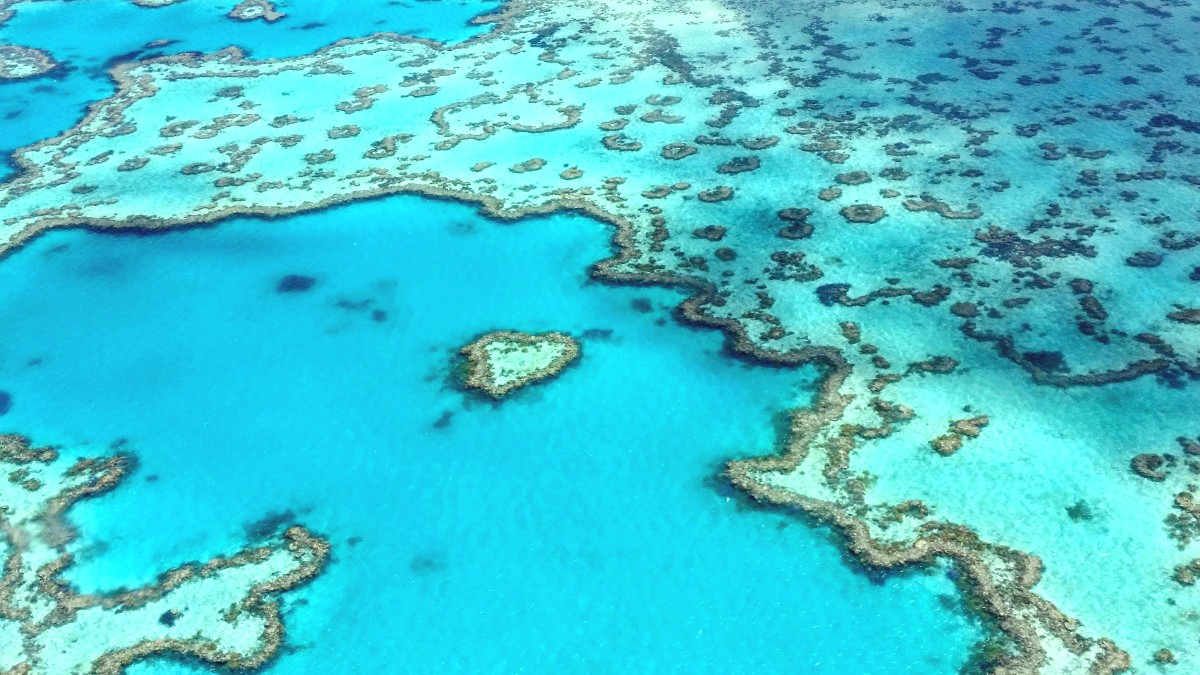
Queensland, Australia
The region experiences two distinct seasons: the dry season and the wet season. Each presents unique advantages and disadvantages for travelers.
Optimal travel planning considers the specific weather patterns and visitor experiences each period delivers.
High Season (June to October): Optimal weather includes less rain, lower humidity, and cooler temperatures. Underwater visibility stays at its best. Fewer marine stingers. Whale watching season runs July to September, with chances to see dwarf minke whales and humpback whales.
Popularity means higher accommodation and tour prices. Locations feel more crowded. Booking well in advance, sometimes several months ahead, for preferred options is wise.
November - April
Heavy rainfall and high humidity are typical from December to April. Though rain can be heavy, it often comes as short, sharp downpours, not continuous.
Risk from November 1 to April 30. Highest risk between January and March. Cyclones may disrupt travel, including flight cancellations and reef tour closures. Monitor weather forecasts during this period.
November - May
Jellyfish present mainly in coastal waters. Box jellyfish and Irukandji jellyfish are present. Wear a full-body stinger suit. Many tour operators make these available for reef trips. Beaches often have designated stinger-netted swimming areas.
If stung by a marine stinger, immediately pour vinegar over the affected area and seek urgent medical attention. First aid posts on popular beaches usually have vinegar.
December - April
Accommodation and tour prices are lower. Crowds are smaller. Landscapes on land are lush and green. Prime time for coral spawning, typically November or December. Experience impressive tropical thunderstorms.
It is hot and humid. Rainfall is high. Risk of tropical cyclones, notably January to March, which may disrupt travel plans. Marine stingers are prevalent, requiring protective suits. Water visibility can be reduced.
Diving/Snorkeling: Visit between May and October for the best visibility and calmest seas. The water is clearer, making for optimal viewing of marine life and coral formations. This period also generally has fewer marine stingers.
Whale Watching: July to September brings opportunities to see dwarf minke whales and humpback whales migrating through the warm waters. Coral Spawning: This natural wonder typically happens in November or December. Specific dates vary yearly based on lunar cycles and water temperature. Check with local operators for timings if this is a priority.
May to October for crystal-clear waters, great for diving.
July to September for dwarf minke and humpback whale sightings.
Typically November or December; a magical natural phenomenon.
Wet season (November-April) brings greenery and full waterfalls.
Low season (December-April) offers a quieter experience with lower prices.
Most non-Australian citizens need a visa to enter the country. Different visa types apply based on nationality and trip purpose.
Most visitors need a visa. Requirements vary by nationality. Obtain an ETA or eVisitor visa for many countries online. Other nationalities need a Visitor Visa.
Upon arrival, have all necessary documents ready for immigration.
Australia is not a low-cost destination, but options work for various budgets. Daily costs vary based on travel style.
This region is generally safe.
Yellow Fever vaccination certificate if you arrive from a country with a risk of Yellow Fever transmission.
Ensure routine vaccinations (MMR, DTP, Polio) are current. Hepatitis A and B, and Tetanus are generally recommended. Consult a travel doctor for personalized advice.
Before your trip, consult a health professional for advice on specific health concerns related to tropical travel.
Prevention is Your Best Strategy
Sunburn/Heatstroke: The UV index in tropical Queensland stays extremely high. Use Broad-spectrum sunscreen SPF 50+. Reapply. Wear a Wide-brim hat, UPF 50+ clothing (like a rash guard), and Sunglasses. Hydrate with water.
Marine Stingers: During "stinger season" (November-May), box jellyfish and Irukandji jellyfish are present. Swim only in designated stinger-netted areas. Wear a full-body stinger suit. Many tour operators make these available. If stung, immediately pour vinegar and seek aid.
Mosquito-borne diseases: Dengue fever and Ross River virus are present. Use Insect repellent (DEET/Picaridin). Wear long sleeves/pants, especially at dawn/dusk.
Australia has high-quality medical facilities. Public and private hospitals are available in major towns like Cairns.
Call 000 for Ambulance, Fire, or Police services. This is a single, nationwide emergency number.
For non-emergencies, visit a GP clinic for consultations or a hospital emergency department for urgent but non-life-threatening conditions.
Australia is generally a safe country. Petty crime can occur in tourist areas, as in any destination. Natural disaster risks vary by season.
Comprehensive travel insurance is highly recommended. It should cover medical emergencies and evacuation.
Your policy should cover medical emergencies, evacuation, trip cancellation or interruption, lost luggage, and personal liability. Verify coverage for adventure activities like diving.
Consider providers like World Nomads for adventurous travelers, SafetyWing for digital nomads, or Insubuy for visitors to the US.
Always read the terms and conditions carefully to understand your policy's limitations and exclusions before purchase.